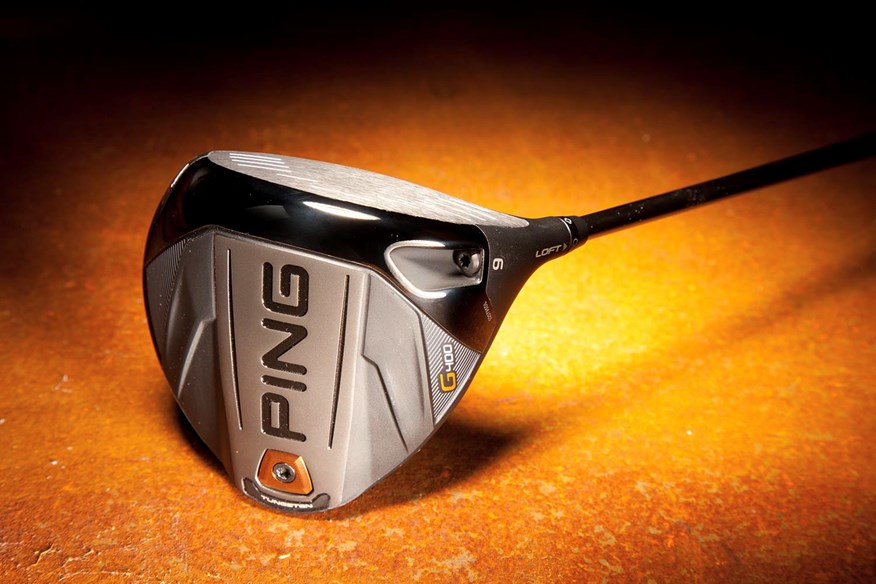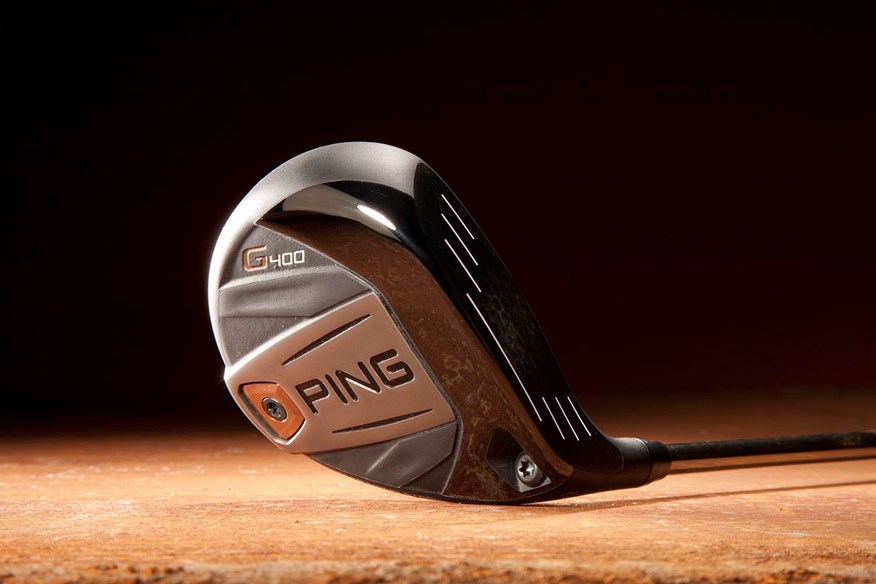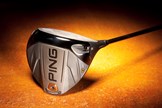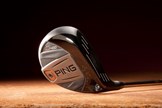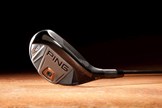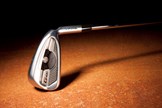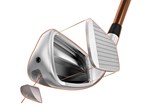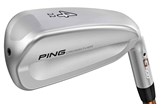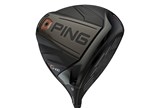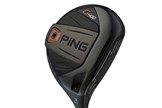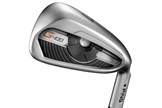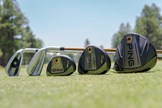Ping launch G400 range: Driver, irons, fairway, hybrid and crossover
Last updated:
Ping G400: Ping have launched their latest G400 driver, fairway woods, hybrid, crossover and irons
PING’s fastest and most forgiving driver to date and an iron that delivers tour-level distance and ball flight highlight the new Ping G400 Series.
The full line of custom-fit, custom-built drivers, irons, fairway woods, hybrids and crossovers is engineered to help golfers lower their scores and increase their enjoyment of the game. The new equipment is available for pre-order and custom fitting at authorised PING golf shops around the world beginning today.
“The G400 driver is a prime example of how our engineering team looks at every single detail of a club to ensure we are optimising each design variable so golfers can improve performance,” said John A. Solheim, PING Chairman & CEO.
“In this case, we’ve gone slightly smaller in volume (445cc) to improve aerodynamics for faster clubhead speeds while actually raising the MOI higher than any previous PING driver. We also employed a thinner, forged face to deliver increased ball speeds.”
“This commitment to performance enabled impressive distance gains and tighter dispersion, the ultimate driving combination. We’ve also engineered an incredibly pleasing sound in the driver through computer simulation that will turn heads on the tee box when golfers get it in their hands. It even has a shaft that changes colour at address to improve the player’s focus.”

PING’s tour staff, including Lee Westwood, Tyrrell Hatton, Mackenzie Hughes, David Lingmerth and Daniel Summerhays, have been quick to switch to the new G400 driver with more than 70 currently in play around the world.
“We’ve never seen faster conversion to a new product than we did at last month’s U.S. Open with 13 drivers in play the first week it was available,” Solheim added. “The players immediately loved the look of the driver and became enamoured with the powerful sound and feel. At the end of the week, the statistics proved that both the longest and most accurate players off the tee at the U.S. Open relied on a G400 driver.”
Ping promise gains in ball speed, more stopping power and a brand new look in each of their new clubs in their G400 range.
From the Ping G400 driver to the G400 Irons, each club has a brand new face material made from maraging steel, which is not only stronger but more flexible than any material Ping have ever used in previous models. The benefit is a thinner and much more forgiving face, and Ping are confident each model has been significantly improved.
The Ping G400 Iron not only launches higher but flies further thanks to COR-Eye technology and a hydropearl finish, while both the hybrid and crossover boast huge improvements in stopping power.
Meanwhile, the Ping G400 Driver has a new shaft and tungsten weightings to promise more forgiveness, and the G400 Fairway woods.
Today’s Golfer went out to Ping HQ in Arizona to find out just how each club compared to the Ping G range, and there were gains in distance on every club. Click on our reviews to find out more!
Ping G400 | Everything you need to know
Ping G400 Driver Review
Ping G400 Irons Review
Ping G400 Fairway Woods Review
Ping G400 Hybrids Review
Ping G400 Crossover Review
Ping G400 Driver: RRP £389
Details: Lofts: 9°, 10.5°. Stock shafts: Ping Alta CB / Ping Tour. Adjustable hosel: Yes. How much loft change: +/-1°.
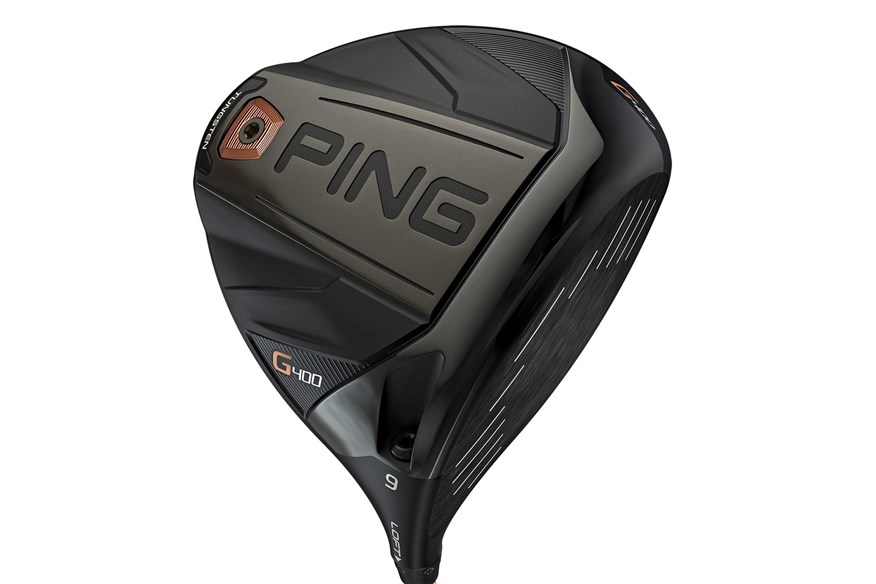
Ping’s G400 driver family originally launched in 2004, and the woods and irons have been on the UK’s best-seller list pretty much every year since (that’s Ping G2, G5, G10, G15, G20, G25, G30, G…).
Each update has focused on improving everything from aerodynamics to forgiveness, ball speed and off-centre hit performance. But some would say with Ping’s roots firmly based in engineering, how a driver sounds and looks has always come secondary to its performance.
Step forward the new Ping G400 driver, which combines everything the company knows about forgiveness and distance with a new look and better acoustics (before you ask, the 400 doesn’t relate to anything).
The Ping G400 driver has a new sound, new tungsten weighting, more pronounced turbulators, a new shaft material called Alta CB 55, and most importantly a new face material. Using maraging steel, Ping have been able to have a thinner and lighter face, which frees up more weight to locate to improve forgiveness in the Ping G400 Driver. it’s also 20% more flexible than the previous G driver.
The G400 driver’s high-density tungsten back weight and Dragonfly Technology help bring the combined MOI (heel/toe and high/low) over 9,000 gram cm2 for the first time and position the CG lower and farther back than any current driver on the market – making it the most forgiving driver in golf. In testing, the G400 outperformed the leading drivers in the marketplace, most notably when comparing dispersion results.
PING G400: Watch Marty Jertson, Director of Product Development at Ping, tell you everything you need to know about the Ping G400 Driver
Ping isn’t promising massive distance gains or huge improvements in ball speed over their current G driver, but are saying that if you’re using a Ping G30 model or older, you’ll definitely see some big gains in terms of ball speed, carry and forgiveness by switching to the Ping G400 driver.
The G400 Driver comes in a standard head as well as LS Tec (Low Spin) and SF Tec (Straight Flight, to curb a slice) models, so there’s one to suit every player. The LS Tec typically lowers spin by 400rpm, while the SF Tec boasts of 12 yards of draw bias over the standard model. LS Tec lofts: 8.5°, 10°. SF Tec lofts: 10°, 12°.
The SFT (Straight Flight) is designed to correct a left-to-right ball flight (for right-handed golfers) and features heel-side tungsten weighting and a lighter swing weight to help square the face.
The LST (Low Spin) version positions the tungsten weight closer to the face to reduce spin approximately 300 rpm for a stronger ball flight.
Read More: Ping G400 Driver Review
Ping G400 Irons: RRP £110 (s), £120 (g) per club
Details: Availability: 4-LW. Stock steel shafts: Ping AWT 2.0 plus 5 upgrade shafts at no charge. Stock graphite shaft: Ping Alta CB.
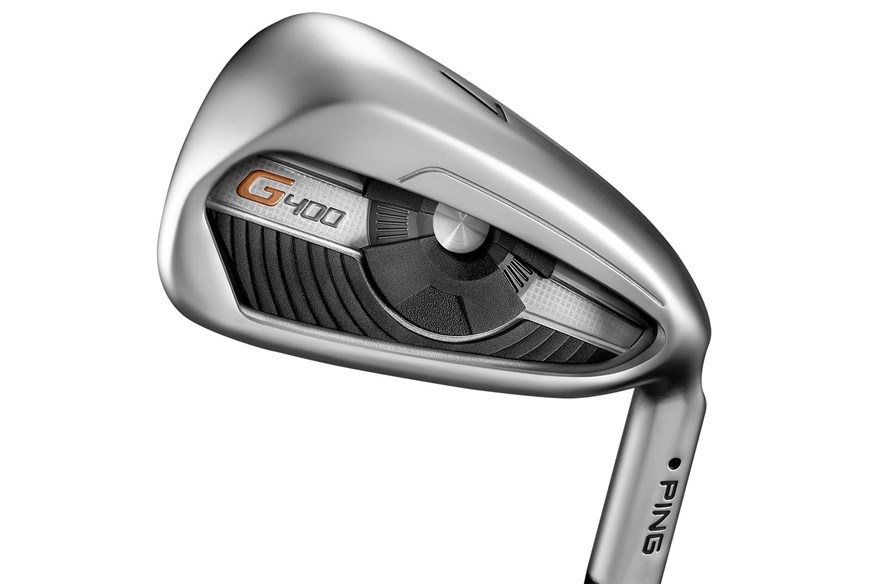
Fact; truly outstanding game-improvement irons don’t come along very often. If you can name more than five, without checking Google, you’re either easily pleased or know something we don’t.
The problems stem from how game improvement irons in the past have been viewed by designers as the poor cousins of better player alternatives. Golf club engineers thought – wrongly – that “average” golfers wanted forgiveness at all costs, and simply forgot to factor-in a decent looking head shapes that golfers would accept as being playable. Ping were guilty of it themselves with the original Ping Zings, but thanks to modern tech things are changing.
As manufacturers have tried to out-do each other on distance, lofts have got stronger; but ball flights got flatter, making it harder to stop shots on a green. So a key design parameter for the Ping G400 iron was longer, but only if it was higher, too. Ping are confident the G400s deliver both.
The Ping G400 iron has had mass removed from inside the top edge and has been relocated lower to improve forgiveness. A thinner top edge also lends itself to flexing at impact, which is part of the reason Ping are so confident the G400 delivers on its “higher and further” promise. One Ping tour staffer summed it up, saying: “You’ve turned my 7-iron into 6-iron distance, but I’m hitting it through an 8-iron window.”
Watch Marty Jertson, Director of Product Development at Ping, tell you everything you need to know about the Ping G400 Iron
Ping have also added a hydropearl finish to their Ping G400 Irons, which not only give it a high premium look but also help to reduce friction between the club and the ground. That means there is less energy lost at impact, and the club will be better at dealing with moisture. Ping say that the finish is so good that it even elimates fliers from the rough.
At the back of the club there is a three-piece elastomer badge, which is there to dampen vibrations. For the player, it means a much more pleasing impact sound, and better feedback to your hands to improve the feel of the club.
One of the most important parts to the Ping G400 Iron is it’s COR-Eye technology, which helps to stiffen up the centre of the face. This makes it possible to use the club’s leading edge to act like a hinge, which in turn increases both face deflection and bounce back.
Read More: Ping G400 Irons Review
Ping G400 Fairway Woods: RRP £240
Details: Lofts: #3-14.5°, #5-17.5°, #7-20.5°, #9-23.5°. Stock shaft: Ping Alta CB, Ping Tour. Adjustable hosel: Yes. How much loft change? +/-1°.
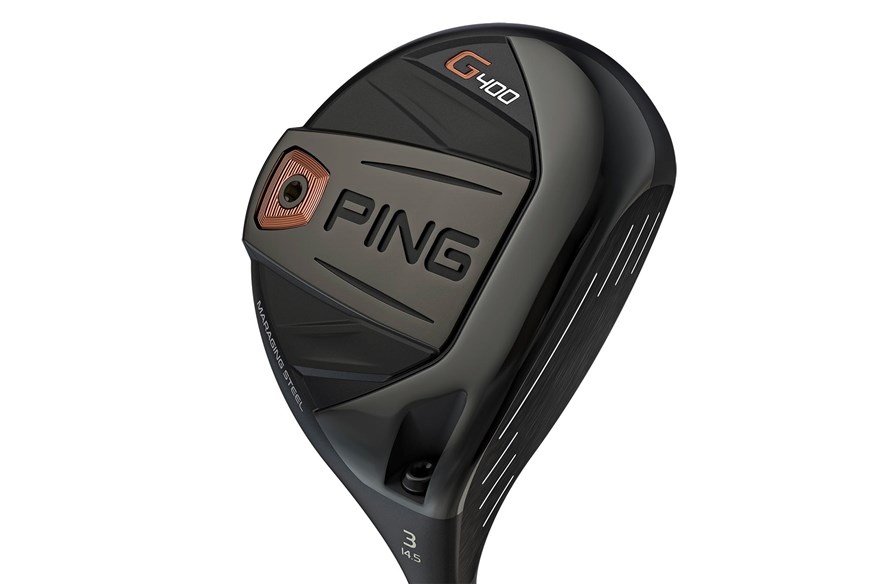
The Ping G400 launch is an entire family, from driver to irons, and like their bigger sibling the new fairways have some serious ball-speed-boosting tech, too.
With the Ping G400 Fairway Wood, the biggest change over the old models is the new maraging steel face, which Ping say is one of the world’s strongest materials and is regularly used in the landing gear of aircrafts. Why is that useful? Because not only is it stronger, but it’s also more flexible than any material Ping have every used in their previous fairway woods, giving an increase in forgiveness, but also allowing better weight distribution throughout the rest of the club.
Another hugely important element of the Ping G400 Fairway Woods are the ‘Smart Grooves’, which Ping say will help give design cues to the golfer and enable them to hit the center of the face more often. While Ping acknowledge the importance of grooves, the 3-wood has no grooves in the centre of the face as Ping say this is because fairway woods are most often hit from the tee or fairway.
PING G400: Watch Marty Jertson, Director of Product Development at Ping, tell you everything you need to know about the Ping G400 Fairway Wood
However, the higher lofted fairway woods do have more grooves than the 3-wood in order to help dissipate more debris and moisture (when playing shots from the rough or longer grass) from the impact zone.
Hybrids play a major role in filling gaps between woods and irons in most golfers’ bags, but Ping says there’s still a place for high-lofted fairways, as they’re more forgiving and higher spinning. So there’s also a 23.5° G400 9-wood and a 22° G400 SF Tec 7-wood.
Ping G400 Fairway Wood Options: If your game involves hitting a lot of 3-woods from the tee, a bigger-body Stretch (13°) G400 means you give up less distance against a driver. And because Ping think of everything, SF Tec models are slightly lighter and higher-lofted to help launch shots off the deck more consistently. Stretch loft: #3-13°. SF Tec lofts: #3-16°, #5-19°, #7-22°.
Read More: Ping G400 Fairway Wood Review
Ping G400 Hybrid: RRP £200
Details: Ping G400 Hybrid £200. Lofts: #2-17°, #3-19°, #4-22°, #5-26°, #6-30°. Stock shaft: Ping Alta CB / Ping Tour. Adjustable hosel: No
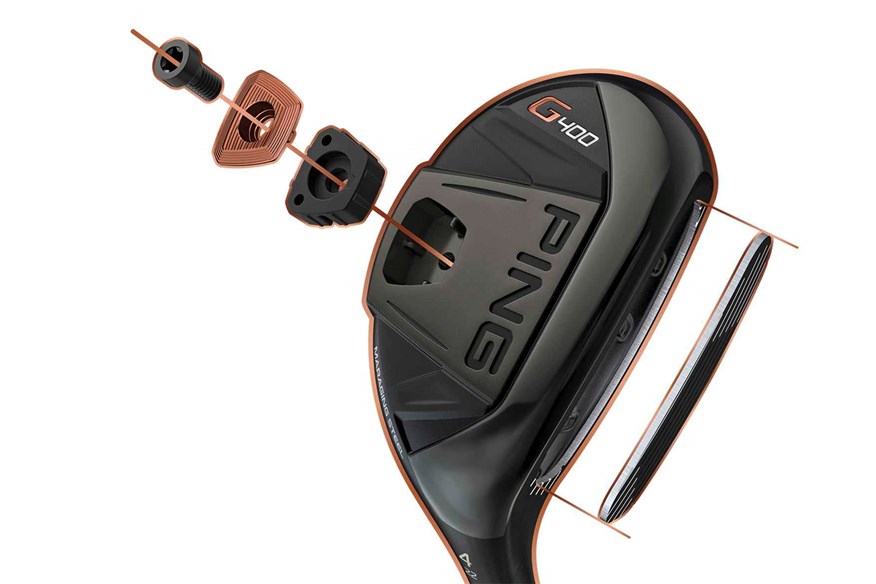
No new golf equipment family launch is complete nowadays without either a matching hybrid or hybrid iron to get you bridge the gap between your longest iron and your fairway woods.
So just like Ping’s G400 driver, irons and fairway woods, the new Ping G400 hybrids have undergone a makeover, too.
With the G400 Hybrid, the biggest improvement is a new maraging steel face, which Ping say gives it both instant ball speed and feel improvement. The material is one of the strongest in the world, and is 20% stronger and more flexible than any previous material Ping have used in a hybrid, and as a result Ping have been able to thin the face of the hybrid down and produce 35% more flex in the face during impact. This results in an increase of 2mph of ball speed on average and a higher peak trajectory in the Ping G400 hybrid.
Ping say that new center of gravity weights also will help golfers launch the ball higher with their latest hybrid, achieving a higher peak trajectory and steeper landing angles by having the weights both lower and deeper. Paired with the maraging C300 steel, it creates more dynamic launch in the club.
PING G400: Watch Marty Jertson, Director of Product Development at Ping, tell you everything you need to know about the Ping G400 Hybrid
“The end result is a higher peak trajectory and steeper landing angles so you can hit shots from a long distance from the green that stop fast”
In addition, Ping sought a way to make the hybrid easier to hit. Some players who struggle with hybrids tend to have trouble finding the middle of the face, but Ping say their improved design, which gives cues to the golfer, solves that problem.
Marty Jertson says “We have two turbulators on the toe and two on the heel, providing this focal point to the center of the face. We’ve paired that with this groove pattern where we left the grooves unpainted right in the middle of the face.”
Read More: Ping G400 Hybrid Review
Ping G400 Crossover: RRP £200
Details: Lofts: #3-19°, #4-22°, #5 25°. Stock shaft: Ping Alta CB /Ping Tour / Ping AWT 2.0. Adjustable hosel: No
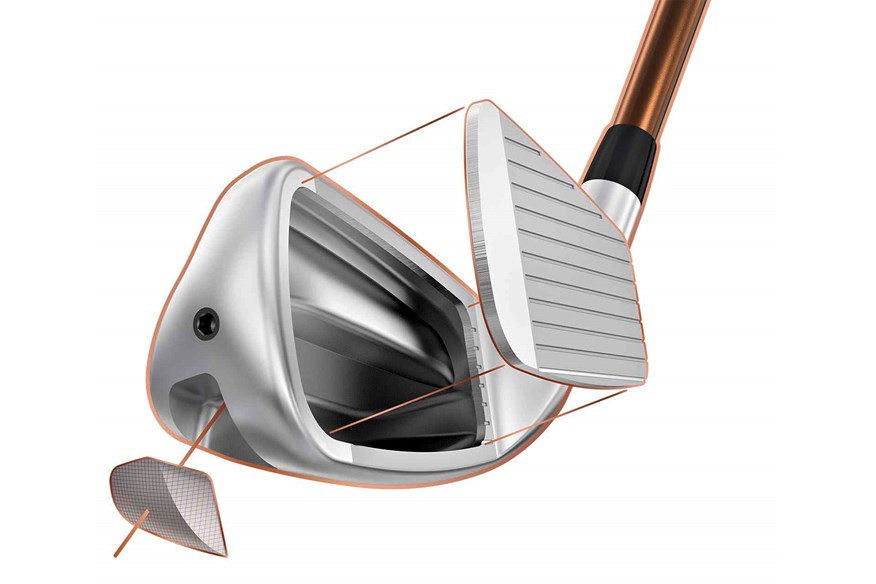
The new maraging steel face is the major improvement in the Ping G400 Crossover, and Ping reckon it gives both instant ball speed and feel improvement, while the driving-iron Crossover – which invented a new club category last year – has a new hydropearl finish like the G400 irons to match the set.
The Ping G400 Cross has a slightly thinner club head than the previous model, which allowed designers to move the center of gravity slightly closer to the face, and Ping say this will really improve the quality of off-center hits and the interaction between the golf club and the ground.
Ping really wanted to improve the stability of the G400 Crossover in both left-to-right dispersion and distance control, despite having a slightly thinner sole design on the new club. To do that, they developed a new technology in their innovation department where they are able to join 17-specific high density tungsten from the outside of the club in, and join this to the body.
Marty Jertson, Director of Product Development at Ping, says “This allowed us to place that mass to optimise the inertia properties. The end result, along with changes to the CG position, is that we’ve improved the shot-bend characteristics for impacts heel-toe by 45% compared to the Ping G. It’s even better for distance control, 40% more consistent spin high and low on the face”
PING G400: Watch Marty Jertson, Director of Product Development at Ping, tell you everything you need to know about the Ping G400 Crossover
One of the key goals Ping targeted with the new Ping G400 Crossover was more stopping power, and in doing so Ping claim they achieved a 20% higher peak trajectory or max height with their latest club.
They also increased the loft by 1 degree, which they say affects the trajectory by about 5%. The other 15% comes from more exotic flexing the face, pairing the COR-eye technology in the G400 Iron paired with drum like flexing mechanics that they get with the G400 Fairway wood and hybrids
Read More: Ping G400 Crossover Review
Find out more about every club in the new Ping G400 range below!
Ping G400
Ping G400 Driver Review
Ping G400 Irons Review
Ping G400 Fairway Woods Review
Ping G400 Hybrids Review
Ping G400 Crossover Review
